Tarek Ahmed. Reservoir engineering handbook
Подождите немного. Документ загружается.

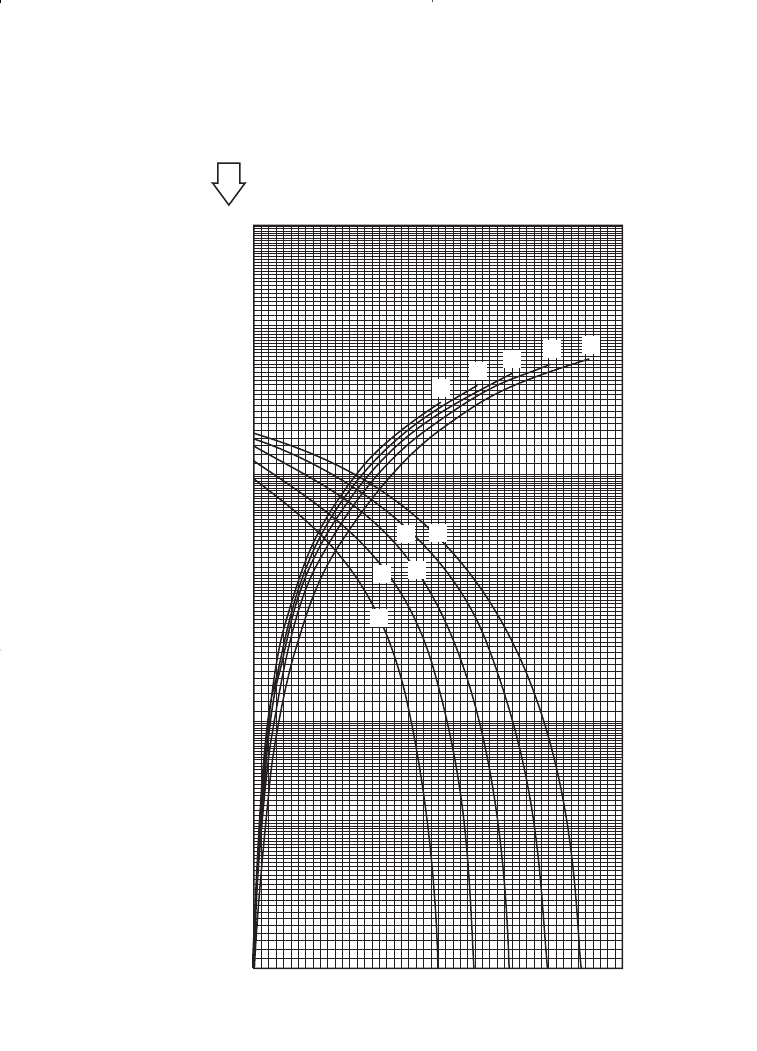
598 Reservoir Engineering Handbook
0.1
1.0
0.2
0.4
0.6
0.8
1.0
2.0
4.0
6.0
8.0
10.0
20.0
40.0
60.0
80.0
100.0
2.5 5.0 7.5 10.0 12.5
a
b
c
d
e
E
D
C
B
A
Distance from Top Perforation to Top
of Sand or Gas-Oil Contact–In Feet
Critical Production Rates–Reservoir bbl/day
Figure 9-19. Critical production rate curves. (After Chaney et al., courtesy OGJ,
May 1956.)
Critical-production-rate curves for sand thickness of 12.5 ft., well radius of 3 in.,
and drainage radius of 1,000 ft. Water coning curves: A, 1.25 ft. perforated inter-
val; B, 2.5 ft.; C, 3.75 ft.; D, 5.00 ft.; and E, 6.25 ft. Gas coning curves: a, 1.25 ft.
perforated interval; b, 2.5 ft.; c, 3.75 ft.; d, 5.00 ft., and e, 6.25 ft.
Reservoir Eng Hndbk Ch 09 2001-10-25 08:37 Page 598
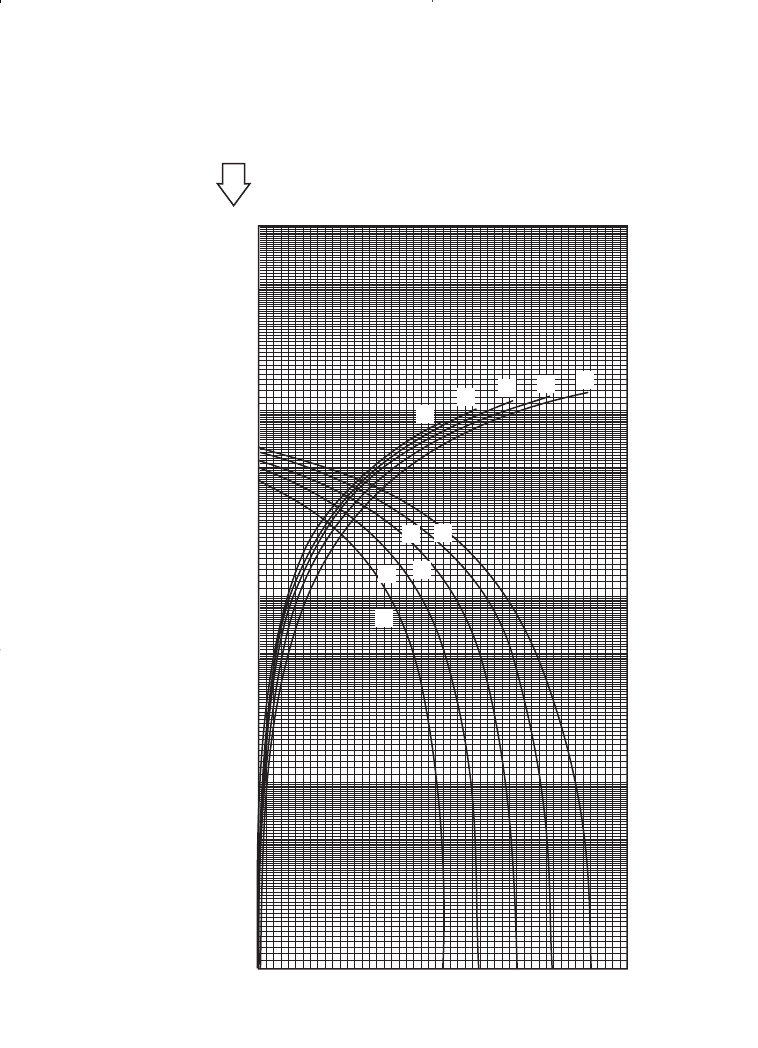
Gas and Water Coning 599
0.1
0
0.2
0.4
0.6
0.8
1.0
2.0
4.0
6.0
8.0
10
20
40
60
80
100
200
400
600
800
1000
510152025
a
b
c
d
e
E
D
C
B
A
Distance from Top Perforation to Top
of Sand or Gas-Oil Contact–In Feet
Critical Production Rates–Reservoir bbl/day
Figure 9-20. Critical production rate curves. (After Chaney et al., courtesy OGJ,
May 1956.)
Critical-production-rate curves for sand thickness of 25 ft., well radius of 3 in., and
drainage radius of 1,000 ft. Water coning curves: A, 2.5 ft. perforated interval; B, 5
ft.; C, 7.5 ft.; D, 10 ft.; and E, 12.5 ft. Gas coning curves: a, 2.5 ft. perforated inter-
val; b, 5 ft.; c, 7.5 ft.; d, 10 ft., and e, 12.5 ft.
Reservoir Eng Hndbk Ch 09 2001-10-25 08:37 Page 599
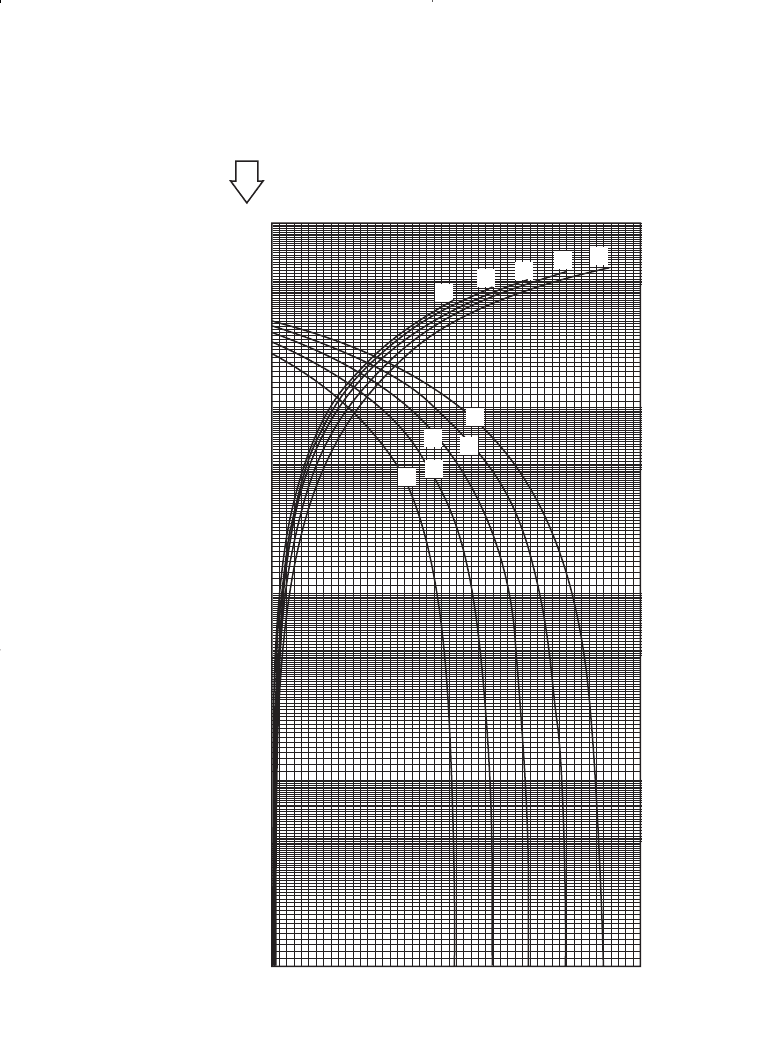
600 Reservoir Engineering Handbook
0.1
0
0.2
0.4
0.6
0.8
1.0
2.0
4.0
6.0
8.0
10
20
40
60
80
100
200
400
600
800
1000
10 20 30 40 50
a
b
c
d
e
E
D
C
B
A
Distance from Top Perforation to Top
of Sand or Gas-Oil Contact–In Feet
Critical Production Rates–Reservoir bbl/day
Figure 9-21. Critical production rate curves. (After Chaney et al., courtesy OGJ,
May 1956.)
Critical-production-rate curves for sand thickness of 50 ft., well radius of 3 in., and
drainage radius of 1,000 ft. Water coning curves: A, 5 ft. perforated interval; B, 10
ft.; C, 15 ft.; D, 20 ft.; and E, 25 ft. Gas coning curves: a, 5 ft. perforated interval; b,
10 ft.; c, 15 ft.; d, 20 ft., and e, 25 ft.
Reservoir Eng Hndbk Ch 09 2001-10-25 08:37 Page 600
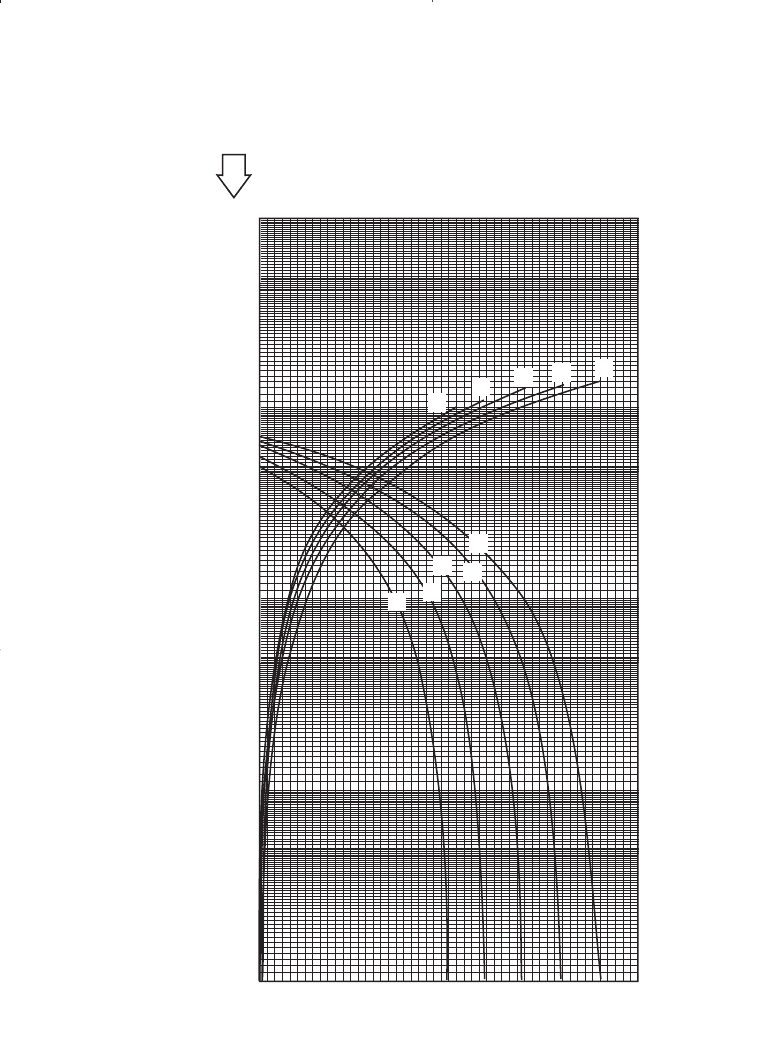
Gas and Water Coning 601
1.0
0
2.0
4.0
6.0
8.0
10
20
40
60
80
100
200
400
600
800
1000
2000
4000
6000
8000
10000
15 30 45 60 75
a
b
c
d
e
E
D
C
B
A
Distance fom Top Perforation to Top
of Sand or Gas-Oil Contact–In Feet
Critical Production Rates–Reservoir bbl/day
Figure 9-22. Critical production rate curves. (After Chaney et al., courtesy OGJ,
May 1956.)
Critical-production-rate curves for sand thickness of 75 ft., well radius of 3 in., and
drainage radius of 1,000 ft. Water coning curves: A, 7.5 ft. perforated interval; B,
15 ft.; C, 22.5 ft.; D, 30 ft.; and E, 37.5 ft. Gas coning curves: a, 7.5 ft. perforated
interval; b, 15 ft.; c, 22.5 ft.; d, 30 ft., and e, 37.5 ft.
Reservoir Eng Hndbk Ch 09 2001-10-25 08:37 Page 601
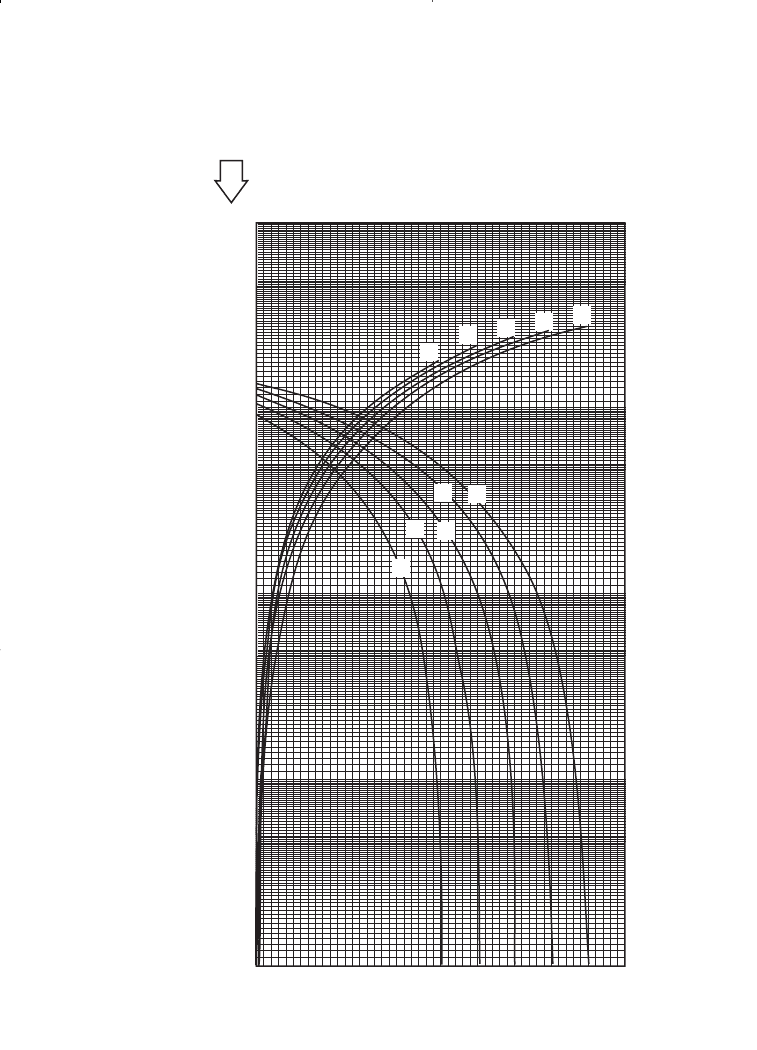
602 Reservoir Engineering Handbook
1.0
0
2.0
4.0
6.0
8.0
10
20
40
60
80
100
200
400
600
800
1000
2000
4000
6000
8000
10000
20 40 60 80 100
a
b
c
d
e
E
D
C
B
A
Distance from Top Perforation to Top
of Sand or Gas-Oil Contact–In Feet
Critical Production Rates–Reservoir bbl/day
Figure 9-23. Critical production rate curves. (After Chaney et al., courtesy OGJ,
May 1956.)
Critical-production-rate curves for sand thickness of 100 ft., well radius of 3 in.,
and drainage radius of 1,000 ft. Water coning curves: A, 10 ft. perforated interval;
B, 20 ft.; C, 30 ft.; D, 40 ft.; and E, 50 ft. Gas coning curves: a, 10 ft. perforated
interval; b, 20 ft.; c, 30 ft.; d, 40 ft., and e, 50 ft.
Reservoir Eng Hndbk Ch 09 2001-10-25 08:37 Page 602
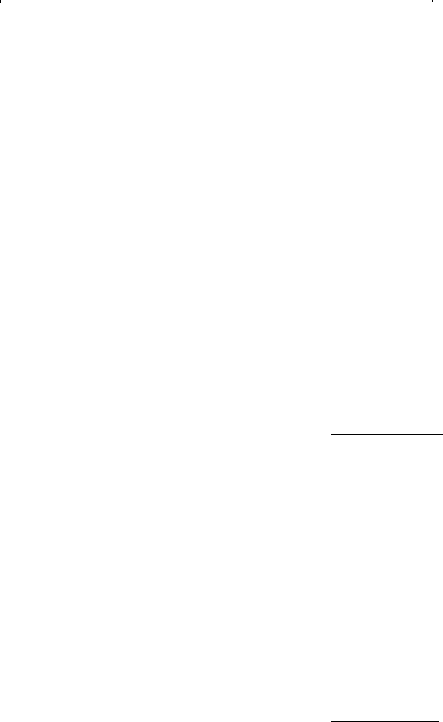
where r
o
= oil density, lb/ft
3
r
w
= water density, lb/ft
3
Q
oc
= critical oil flow rate, STB/day
k
o
= effective oil permeability, md
In gas-water systems
where r
g
= gas density, lb/ft
3
r
w
= water density, lb/ft
3
Q
gc
= critical gas flow rate, Mscf/day
b
g
= gas FVF, bbl/Mscf
k
g
= effective gas permeability, md
In gas-oil systems
Example 9-8
In an oil-water system, the following fluid and sand data are available:
h = 50¢ h
p
= 15¢
r
o
= 47.5 lb/ft
3
r
w
= 63.76 lb/ft
3
m
o
= 0.73 cp B
o
= 1.1 bbl/STB
r
w
= 3≤ r
e
= 1000¢
k
o
= 93.5 md
Calculate the oil critical rate.
Solution
Step 1. Distance from the top of the perforations to top of the sand = 0¢
oc
o
og
o
o
curve
Q
= 0.2676
k
()
B
Q
¥
-
È
Î
Í
˘
˚
˙
-
10
4
rr
m
(9 -16)
gc
g
wg
g
g
curve
Q
= 0.5288
k
()
B
Q
¥
-
È
Î
Í
Í
˘
˚
˙
˙
-
10
4
rr
m
(9 -15)
Gas and Water Coning 603
(text continued from page 597)
Reservoir Eng Hndbk Ch 09 2001-10-25 08:37 Page 603

Step 2. Using Figure 9-20, for h = 50, enter the graph with 0¢ and move
vertically to curve C to give:
Q
curve
= 270 bbl/day
Step 3. Calculate critical oil rate from Equation 9-14.
The above method can be used through the trial-and-error procedure to
optimize the location of the perforated interval in two-cone systems. It
should be pointed out that Chaney’s method was developed for a homo-
geneous, isotropic reservoir with k
v
= k
h
.
Chaperson’s Method
Chaperson (1986) proposed a simple relationship to estimate the criti-
cal rate of a vertical well in an anisotropic formation (k
v
π k
h
). The rela-
tionship accounts for the distance between the production well and
boundary. The proposed correlation has the following form:
where Q
oc
= critical oil rate, STB/day
k
h
= horizontal permeability, md
Dr = r
w
-r
o
, density difference, lb/ft
3
h = oil column thickness, ft
h
p
= perforated interval, ft
Joshi (1991) correlated the coefficient q
*
c
with the parameter a≤ as
q
*
c
= 0.7311 + (1.943/a≤) (9 - 18)
¢¢
a =(
r
/
h)
k
/
k
evh
()919-
oc
h
2
p
o
o
c
Q
= 0.0783
k
(h
h
)
B
[ ]q¥
-
-
10 9 17
4
m
rD
*
()-
oc
Q
= 0.5288
93.5 (63.76 47.5)
(1.1) (0.73)
270 = 27 STB/day¥
-
È
Î
Í
˘
˚
˙
-
10
4
604 Reservoir Engineering Handbook
Reservoir Eng Hndbk Ch 09 2001-10-25 08:37 Page 604
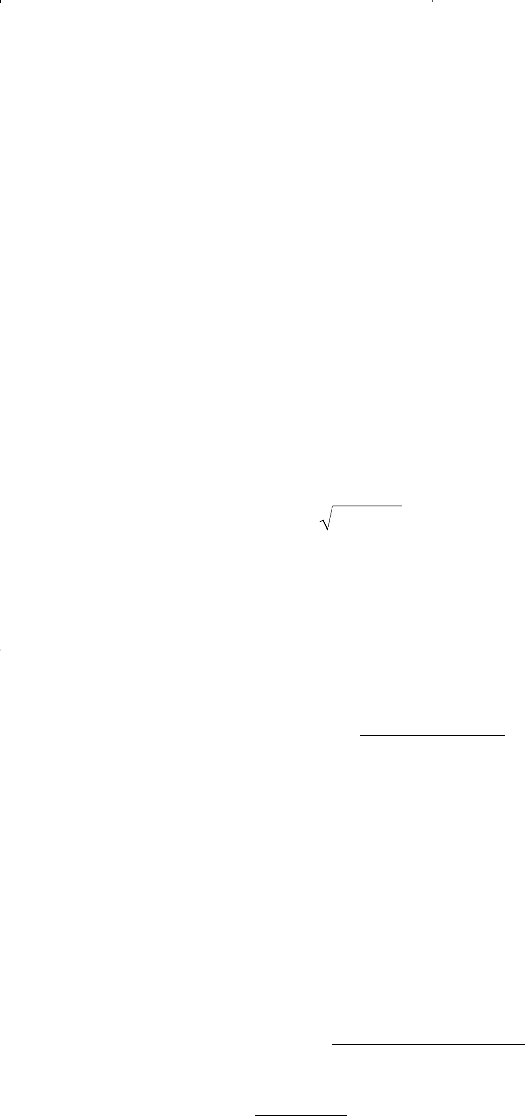
Example 9-9
The following data are available on an oil-water system:
h = 50¢ r
e
= 1000¢m
o
= 0.73 cp
B
o
= 1.1 bbl/STB r
w
= 63.76 lb/ft
3
k
h
= 100 md
r
o
= 47.5 lb/ft
3
k
v
= 10 md h
P
= 15¢
Calculate the critical rate.
Solution
Step 1. Calculate a≤ from Equation 9-19.
Step 2. Solve for q
*
c
by applying Equation 9-18.
q
*
c
= 0.7311 + (1.943/6.324) = 1.0383
Step 3. Solve for the critical oil rate Q
oc
by using Equation 9-17.
Schols’ Method
Schols (1972) developed an empirical equation based on results
obtained from numerical simulator and laboratory experiments. His criti-
cal rate equation has the following form:
oc
wo
o
2
p
2
o
o
ew
0.14
e
Q
= 0.0783
()
k
(
hh
)
u
B
0.432 +
3.142
l(
r
/
r
)
(h /r )
¥
--
È
Î
Í
˘
˚
˙
¥
È
Î
Í
˘
˚
˙
-
10
4
rr
n
(9 - 20)
oc
2
oc
Q
= 0.0783
(100)
(50 15)
(0.73) (1.1)
[63.76 47.5] (1.0383)
Q = 20.16 STB/day
¥
-
-
-
10
4
¢¢
a = (1000/50) 10 /100 = 6.324
Gas and Water Coning 605
Reservoir Eng Hndbk Ch 09 2001-10-25 08:37 Page 605

where k
o
= effective oil permeability, md
r
w
= wellbore radius, ft
h
p
= perforated interval, ft
r=density, lb/ft
3
Schols’ equation is only valid for isotropic formation, i.e., k
h
= k
v
.
Example 9-10
In an oil-water system, the following fluid and rock data are available:
h = 50¢ h
p
= 15¢r
o
= 47.5 lb/ft
3
r
w
= 63.76 lb/ft
3
m
o
= 0.73 cp B
o
= 1.1 bbl/STB r
e
= 1000¢ r
w
= 0.25¢
k
o
= k = 93.5 md
Calculate the critical oil flow rate.
Solution
Applying Equation 9-20, gives
BREAKTHROUGH TIME IN VERTICAL WELLS
Critical flow rate calculations frequently show low rates that, for eco-
nomic reasons, cannot be imposed on production wells. Therefore, if a
well produces above its critical rate, the cone will break through after a
given time period. This time is called time to breakthrough t
BT
. Two of
the most widely used correlations are documented below.
The Sobocinski-Cornelius Method
Sobocinski and Cornelius (1965) developed a correlation for predict-
ing water breakthrough time based on laboratory data and modeling
results. The authors correlated the breakthrough time with two dimen-
oc
22
.14
oc
Q
= 0.0783
(63.76 47.5) (93.5) (
50 15
)
(0.73) (1.1)
0.432 +
3.142
l (1000 /.25)
(50/1000
)
Q = 18 STB/day
¥
--
È
Î
Í
˘
˚
˙
¥
È
Î
Í
˘
˚
˙
-
10
4
0
n
606 Reservoir Engineering Handbook
Reservoir Eng Hndbk Ch 09 2001-10-25 08:37 Page 606

sionless parameters, the dimensionless cone height and the dimensionless
breakthrough time. Those two dimensionless parameters are defined by
the following expressions:
Dimensionless cone height Z
where r=density, lb/ft
3
k
h
= horizontal permeability, md
Q
o
= oil production rate, STB/day
h
p
= perforated interval, ft
h = oil column thickness, ft
Dimensionless breakthrough time (t
D
)
BT
The authors proposed the following expression for predicting time to
breakthrough from the calculated value of the dimensionless break-
through time (t
D
)
BT
:
where t
BT
= time to breakthrough, days
f=porosity, fraction
k
v
= vertical permeability, md
M = water-oil mobility and is defined by:
with (k
ro
)
swc
= oil relative permeability at connate water saturation
(k
rw
)
sor
= water relative permeability at residual oil saturation
a=0.5 for M ≤ 1
a=0.6 for 1 < M ≤ 10
Joshi (1991) observed by examining Equation 9-22 that if Z = 3.5 or
greater, there will be no water breakthrough. This observation can be
M=
k
k
rw sor
ro swc
o
w
()
()
È
Î
Í
˘
˚
˙
Ê
Ë
Á
ˆ
¯
˜
m
m
(9 - 24)
t=
20,325 h (
t
)
()
k
(1+ M )
BT
o
D
BT
wo
v
m
f
rr
a
-
(9 - 23)
()t=
4 Z 1.75
Z
0.75 Z
72 Z
DBT
2
+-
-
3
(9 - 22)
Z = 0.492
khh h
BQ
woh p
oo o
¥
--
-
10
4
()()rr
m
(9 - 21)
Gas and Water Coning 607
Reservoir Eng Hndbk Ch 09 2001-10-25 08:37 Page 607
